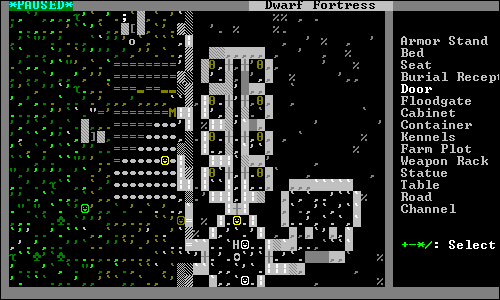Dwarf fortress, initally released in 2006 and in a constant state of development, is a game for PC created by two brothers, Tarn and Zach Adams. Describing the gameplays systems would be too complicated and since it's really irrelevant to the contextual influences on it's art I shall leave the reader to learn more about the game itself.
 |
| The beautiful ASCII in action |
The game world is three dimensional but is displayed to the player in a 2d topdown veiw. For the graphics, the game use a slightly modified code page 437 characters in 16 different colors. This is often referred to as "ASCII" art, since it uses characters rather than images to convey information. This style of visual representation traces back many years back to games which ran on computers that couldn't display images. All of these games are influences to some extent but perhaps the one that could be considered most influential is Rogue.
| Rogue, the original Roguelike |
No comments:
Post a Comment